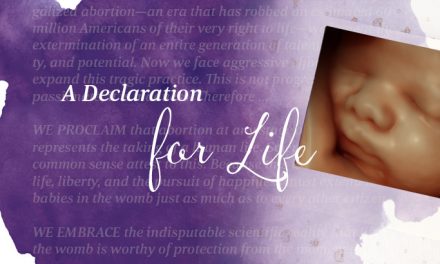The Arizona Supreme Court recently decided that a woman cannot use the embryos she made with her ex-husband in order to conceive a child. This complicated case raises a lot of ethical questions about the complex and largely unregulated artificial reproduction industry.
In 2014, Ruby Torres, with her then-boyfriend and soon-to-be husband John Joseph Terrell, decided to create several embryos before she underwent treatment for breast cancer. The desire to preserve her ability to have children is completely understandable given the situation. At the clinic, the couple signed an agreement stating that in the event of a divorce both parties would have to give explicit consent on how the embryos would be used and, if not, the embryos would be donated to another couple.
Unfortunately, the marriage only lasted two years. The couple divorced in 2017 and their embryos have lingered in litigation limbo ever since. The problem is that Torres still wants to have the children and Terrell doesn’t.
But from many of the reports and court documents, it sounds like the marriage and the creation of these children were done, at least on Terrell’s side, more out of sympathy and support than an actual desire to build a life and have children with Torres.
Torres’ battle with cancer is tragic and I have the utmost sympathy for her situation, but would it perhaps have made more sense to freeze her eggs rather than rush her relationship with her then boyfriend and create embryos that will now likely never be used? The couple were only married for two years according to reports. In court documents, Terrell even acknowledged that he didn’t think she would survive and that he would not have married her if “she didn’t have cancer and need his health insurance.”
To a certain extent, it is understandable that Terrell doesn’t want Torres to have the children, and there could be several reasons for that. The most obvious is that he doesn’t want the legal and financial responsibility for the children that would be born to his ex-wife. If those children are born, regardless of what she says initially, he could be on the hook for child support for the next 18 years or more.
He could also be against her having the children because he doesn’t necessarily trust either her parenting abilities or emotional state. After only two years of marriage, perhaps he saw signs that he didn’t want to see in the woman who would be the mother of his children. He also could’ve wanted to remain in the home with his children and is uncomfortable with the idea that she would be raising them without him.
As Terrell’s lawyer has said several times in interviews, Terrell shouldn’t be forced to become a father.
That all sounds a bit harsh, but here’s the thing. Artificial reproduction is often described to couples as a “fix” for their problems with little regard for the lives of the embryos created or whether their relationship is even solid.
If this had happened to a couple who had been married for five years and was in a strong and stable relationship, the situation could’ve been much different. But it sounds like Torres and Terrell rushed a relationship that was based on sympathy and a cancer diagnosis, not love. As reported by the Phoenix New Times, Terrell initially declined to become the sperm donor before eventually changing his mind. Now, these preborn babies that were created in a petri dish now may no longer have the chance at life because the decisions were made in a crisis situation.
They’ll likely join an estimated one million frozen embryos out there waiting for implantation. That’s a million individual lives that have been left in a suspended state for years or even decades in some cases. This sometimes happens because the couples have already had the number of children that they want, and others are donated simply because the couple that conceived them separated or divorced. That just isn’t right or ethical.
The situation is still unbelievably tragic for Torres, who will be unable to have any biological children. But life shouldn’t be treated in a cavalier nature without thought to the long-term consequences.
Photo by Drew Hays






